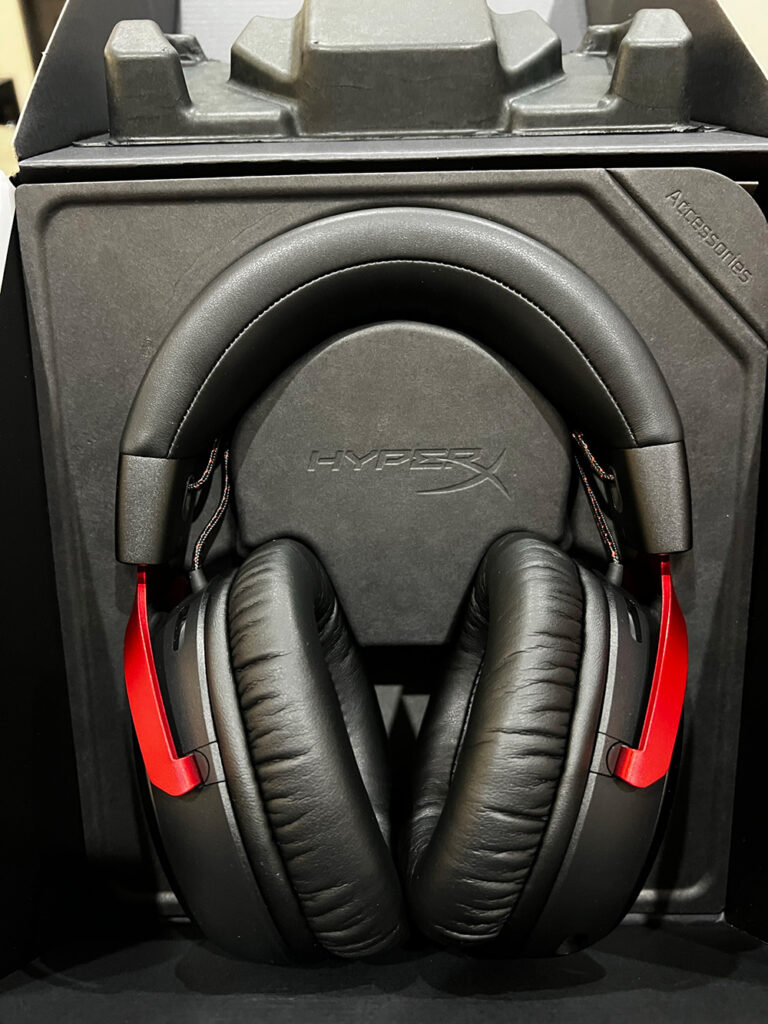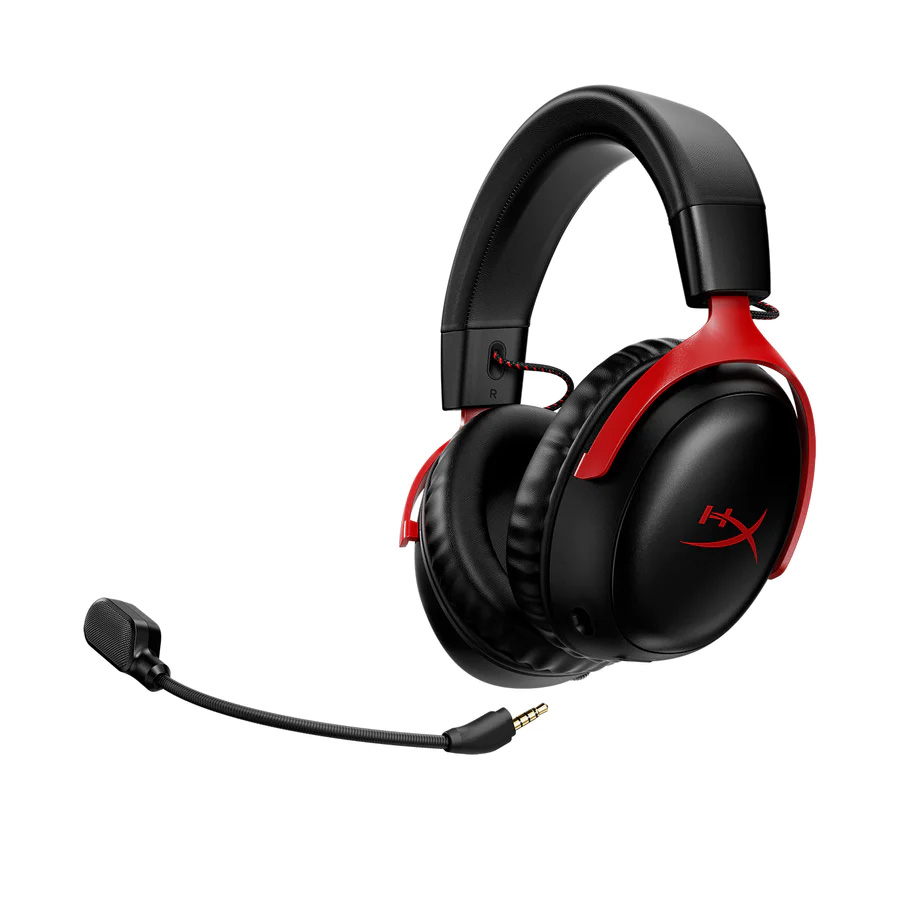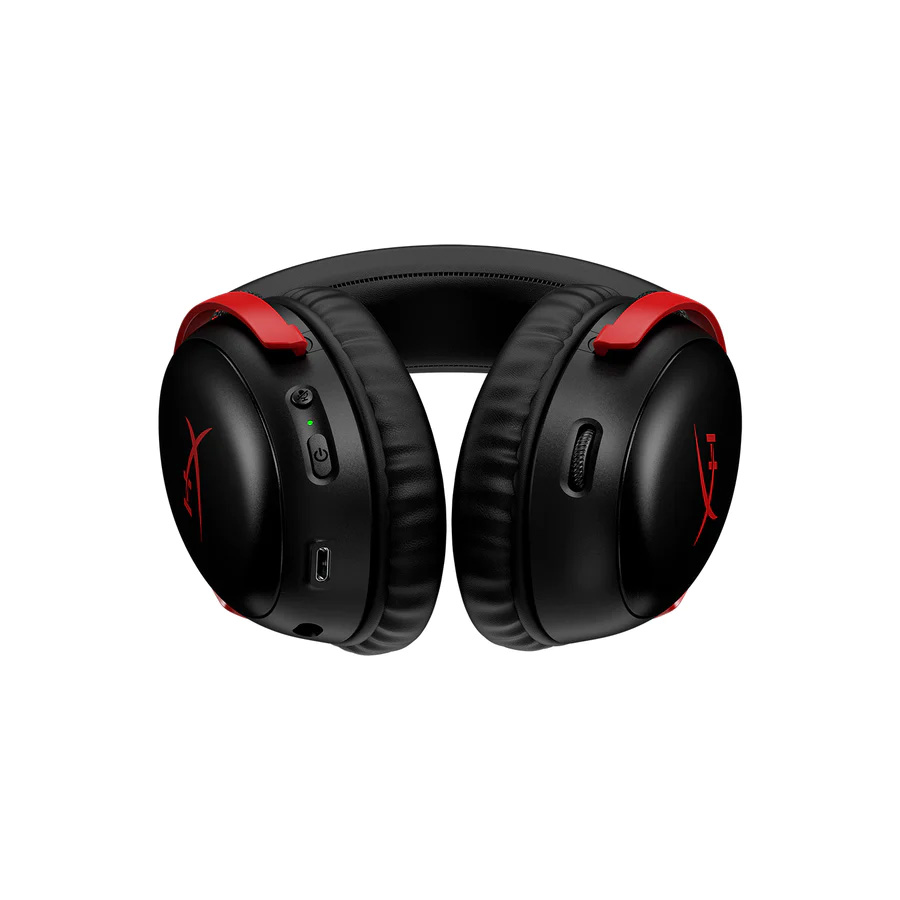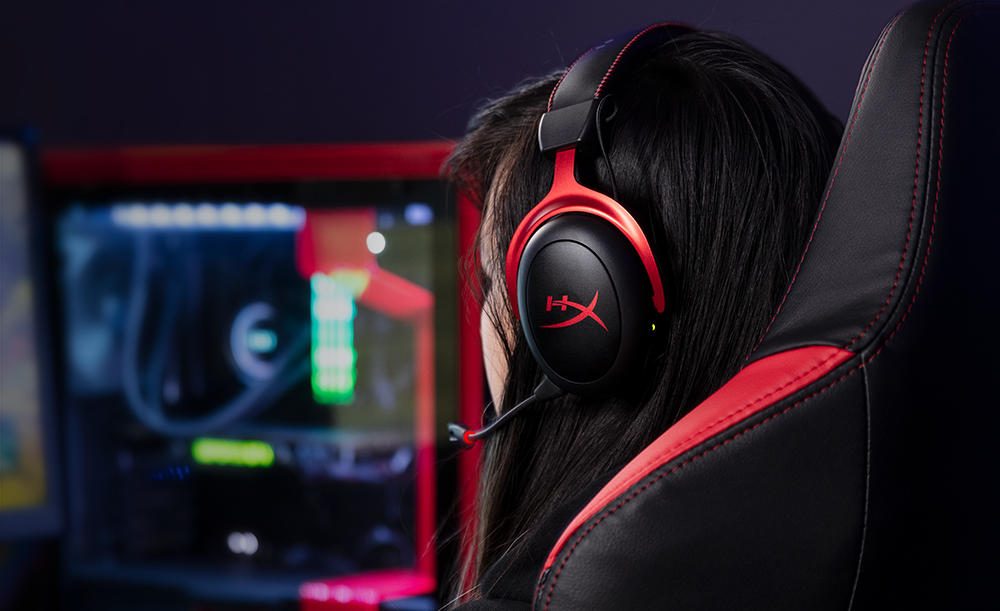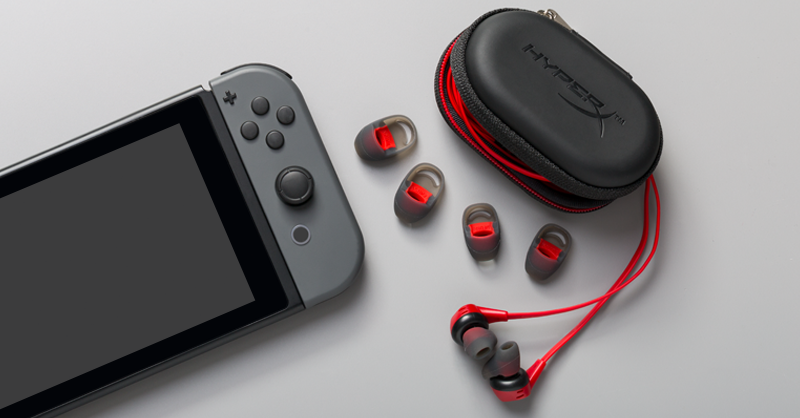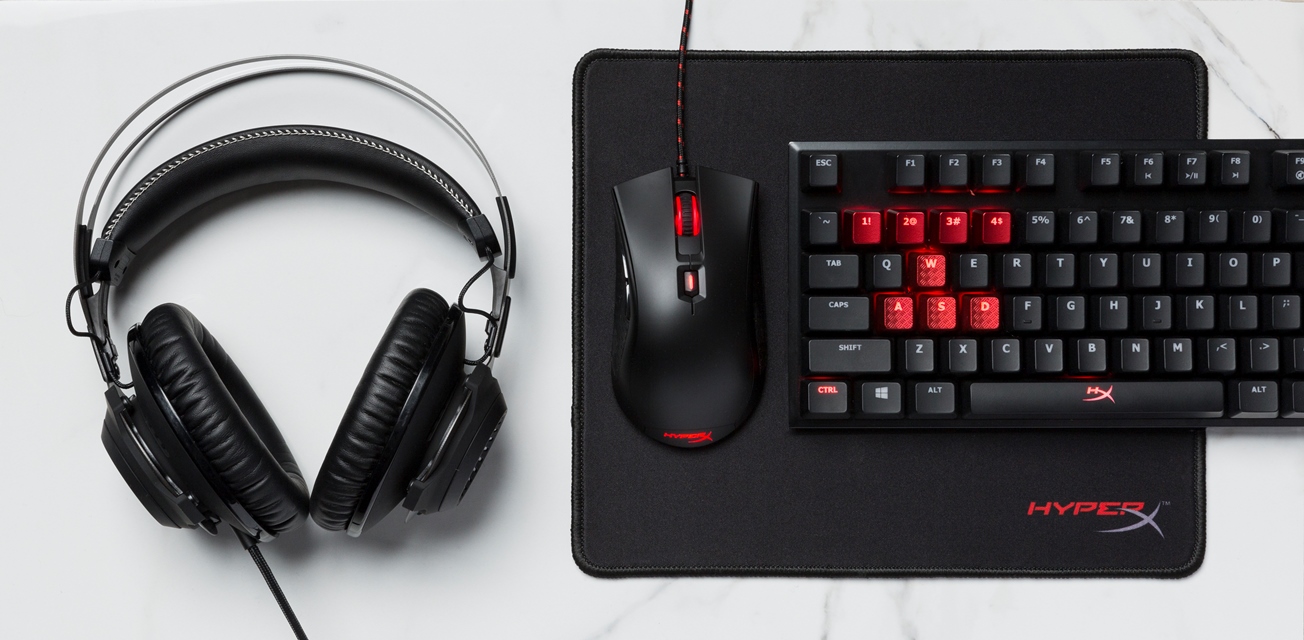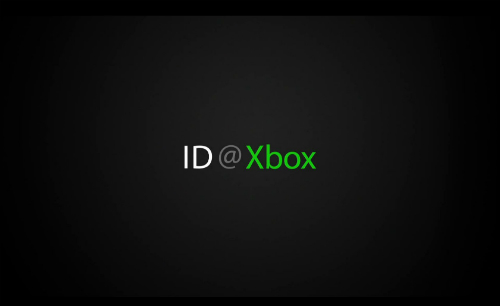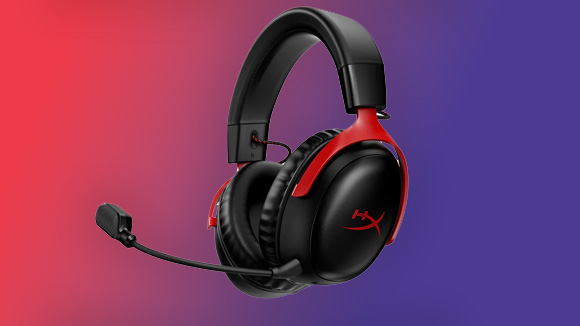
Two years ago, we reviewed HyperX’s Cloud II Wireless headset, which we judged as both comfortable and long-lasting in terms of battery life. Diligently, HyperX has now released a follow up in both the wired and wireless versions of their Cloud III line, and the Cloud III Wireless does a good job of improving on its predecessor’s strengths, providing a good wireless all-rounder.
Physically, it’s very much same-same but slightly different to the Cloud II, with the same metal arms and earcups and cushioned headband, although the Cloud II ditches the red stitching that was present on its predecessor for a sleeker all-black look. Once again the wires connecting the ear cups to the headband aren’t hidden and float above each, and seem to have inherited the red accents now absent from the headband. Beyond that, it still feels very comfortable on the head, with a firm, but not overly aggressive grip, and comfortable ear cushions with soft leatherette and memory foam.
The mic is once again detachable and this time looks a bit sleeker, ditching the foam pop filter for a non-squishy solution, a metal pop-screen with a built in LED mute indicator. It looks a lot more professional than the previous model, even if foam windscreens are tried-and-tested solutions.
The big upgrade this time around is in the battery life, which jumps from the Cloud II’s 30 hours, to 120 hours in the Cloud III, as stated by HyperX. In practice, this makes the headset an ideal all-rounder solution, especially if you use headphones in your regular work or out and about. I’ve been using the Cloud III for the past week and a half across gaming sessions, Zoom meetings, video editing on laptops and general multimedia use, and haven’t had to recharge it yet. The fact that HyperX throw in a protective felt travel bag for the headset obviously shows that they get this is a big selling point for the headset, as its battery life makes it very dependable to quickly bring out and use at a moment’s notice. The Cloud III has a USB-C dongle (which comes with a USB-A adapter) that connects easily to PCs, PS5, PS4 and Nintendo Switch.
There are some trade-offs. For one, there’s still no wired 3.5mm connection for use when the battery runs down, and of course this edition isn’t a specialised Xbox version so it won’t work with those consoles (sorry, Starfield players, you’ll have to stay on PC). It also doesn’t support Bluetooth, and while you could technically use the dongle on a USB-C phone, would you want to? In that respect, it doesn’t offer the mixed-audio solution that other wireless headsets provide, such as call-switching. The maximum battery life of 120 hours is also dependent on volume, with the stated value based on a volume of 50% (although this fact is a little hard to find both on the box and online). Even so, using the headphones at 50% volume will be sufficient for most people as the 53mm angled drivers can get very loud, and as someone who’s a little more conscious of hearing damage than I used to be in uni with my earbuds turned up full blast, 50% is plenty. It’s worth noting that despite the increase in battery life, the Cloud III Wireless doesn’t feel that much heavier compared to either its predecessor or the wired version, and is still light enough to be comfortable.
As gaming headphones, the Cloud III Wireless did a fine job with whatever I threw at it. The DTS: X option it provides is only available through desktop software on PC, and it does about as good as job as most virtual surround sound solutions, and functions similarly to using the headset on PS5 with its 3D audio. A lot of the games I’ve been playing recently are dialogue and music heavy, like Virtue’s Last Reward, Deltarune and Kingdom Hearts II Final Mix, and the Cloud III Wireless’ soundstage was pretty much dead on in its soundstage, with no lag or latency. Chucking on more action intensive games like Battlefield 2042, the Cloud III Wireless gives a decent sense of position and bass, although it’s not overwhelmingly clear nor explosive. In general use for multimedia and work, particularly video editing, while they’re not necessarily studio-quality, they are more than serviceable with their audio quality, and in fact quite handy given how easy it is to move them across computers with the simple USB dongle.
The mic, while looking quite different to the foam-covered version found on the Cloud II, performs similarly in that its fine for chatting and gaming sessions, but not necessarily for clear audio for streaming or any professional recording. However, the fact it’s removable, leaving a sleeker and more unencumbered design when it is, actually makes the Cloud III’s a good combination to pair with something a little more substantial, like HyperX’s own Quadcast S.
Ultimately the Cloud III Wireless is a good all-rounder wireless headset, whose main strength is an absurdly beefy and reliable battery life that makes them a great set to chuck in your bag and take with you between games, work and travel, as they function well across most uses and devices while providing some great comfort. The price-point is a little high, although going off its Amazon AU page as of writing it’s actually about $20 than the Cloud II Wireless was at its launch, which makes it a pretty good deal in that respect. However, it has similar drawbacks to its predecessor, namely the lack of way to use them non-wirelessly. However, if you’re set on going wireless and in need of a solid piece of hardware that won’t require too much attention, then the Cloud III Wireless is a great performer.
-Fantastic battery life -Great sounding -Compatible with a lot of devices, easy to use USB dongle -Very comfy
-No wired connection -Some caveats to using features like DTS:X

